There are marbles, and then there are vintage and old marbles worth money. Sometimes, worth tens of thousands of dollars.
As with any collecting hobby, it’s essential to spot the difference between common, modern, or mass-produced marbles and what are truly the rarest antique marbles fit for a collection.
Looking for Old Marbles Worth Money?
Avid collectors are looking for key signs that the marble they’re about to purchase is worth their time.
We’ll examine the history of marble production before discussing marble conditions and features you’ll need to keep your eye on.
Ancient Marbles
The concept of the marble stretches back to ancient Rome. At that time, marbles were made from clay hardened in an oven.
These marbles could be made in different colors and usually featured the owners’ markings.
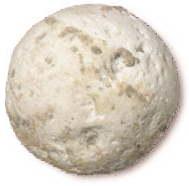
Marbles could also be found in Mesopotamia, Egypt, and the Indus Valley and could be made of clay, stone, glass, or even bone. Marbles made their way to Britain in the Medieval era.
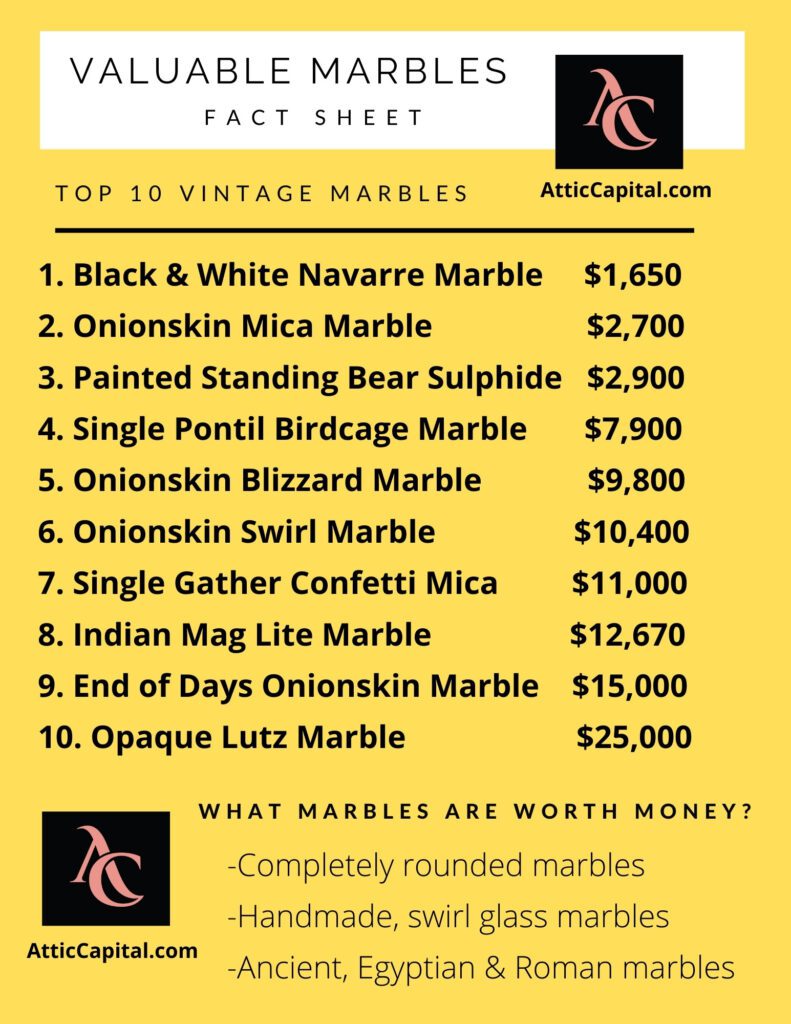
Top 10 Most Valuable Marbles in the World
What vintage and antique marbles are worth money? Here’s the top 10 most valuable, rarest, and most expensive marble list.
Black and White Navarre Marble – $1,650
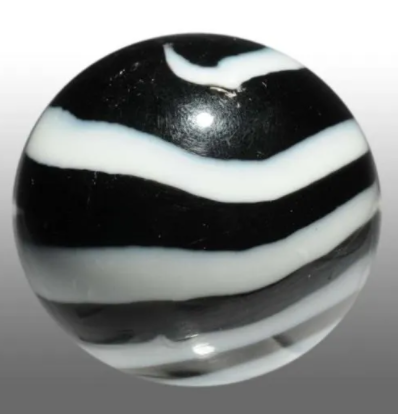
Onionskin Mica Marble – $2,700
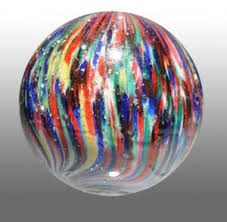
Painted Standing Bear Sulphide Marble – $2,900
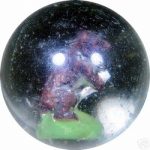
Single Pontil Birdcage Marble – $7,900
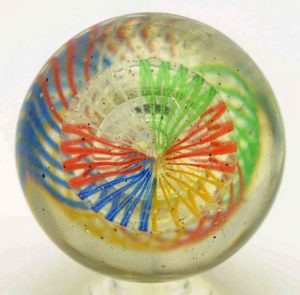
Onionskin Blizzard Marble – $9,800
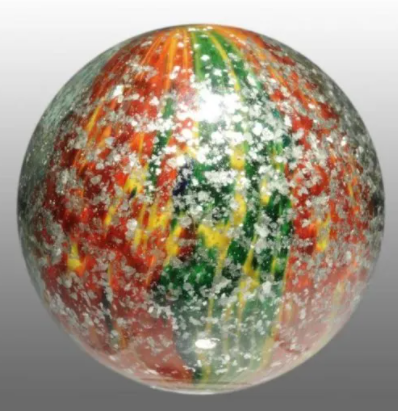
Onion skins Swirl Marble – $10,400
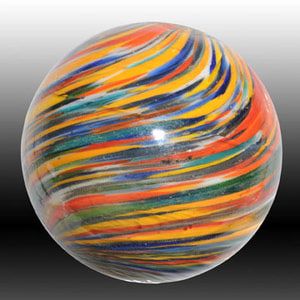
Single Gather Confetti Mica Marble – $11,000
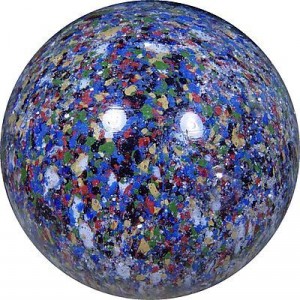
Indian Mag Lite Marble – $12,670
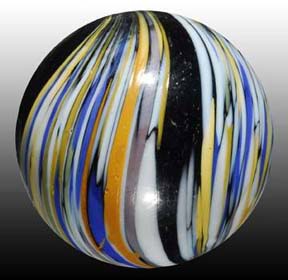
End of Days Onionskin Marble – $15,000
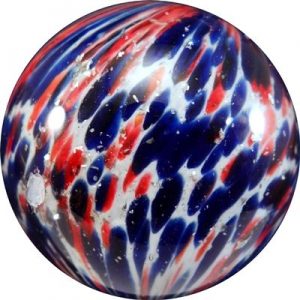
Opaque Lutz Marble – $25,000
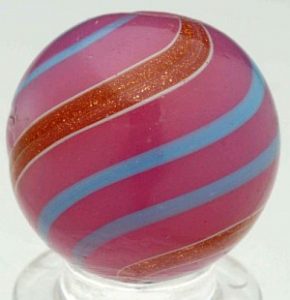
Marbles and a Production Breakthrough
Until the 1800s, marbles were exclusively handmade. German glassmakers of the 1800s in the Thuringen region invented “marble scissors.”
The tool would snip off part of a heated glass rod and shape it into a ball, making glass marbles far easier to produce and increasing their availability.
In the 1870s, ceramic marbles debuted, and since they were even simpler to make, they resulted in widespread mass production. Marbles became popular in the U.S. and were exported heavily.
In the early 20th century, when World War I began and German exports were shut down, American glassblowers and manufacturers started producing marbles in earnest.
The Peltier Glass Company
Peltier Glass Co was formed in 1886 by Victor Peltier, producing single stream, transparent, and opaque white swirled marbles.
Companies like Akro Agate began in 1911, and M.F. Christensen and Son Company made glass marbles in the U.S. as early as 1903.
Vitro Agate started making marbles in 1932. Their name changed several times, and they are now called Jabo Vitro. Along with Marble King, they’re one of two marble manufacturers currently operating.
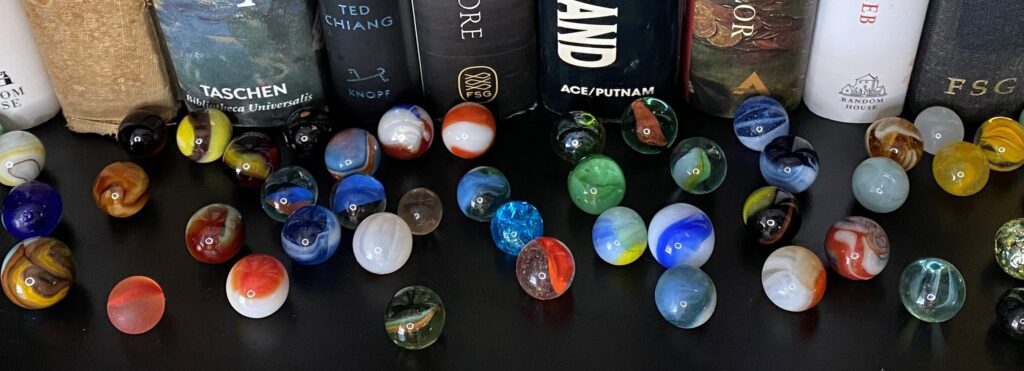
Vintage Marble Collection Characteristics
When discussing expensive and rare marbles, it’s important to establish the definition of “condition.”
Ironically, a marble that looks like it’s in a rougher shape may be the more valuable one. Most collectible and valuable vintage marbles are handmade, which means there will be imperfections not present in modern machine-made marble.
Old Vintage Marbles Worth Money
Always be cautious of unscrupulous dealers trying to pass off new marbles for valuable antique ones. Marble collectors should be cautious of dealers claiming a vintage rare marble in excellent condition.
The Pontil Mark
The pontil mark is where a stick held the blown glass as it formed into the marble.
Common on old glass marbles, it will be slightly rougher than the rest of the marble and won’t be found on machine-made marbles.
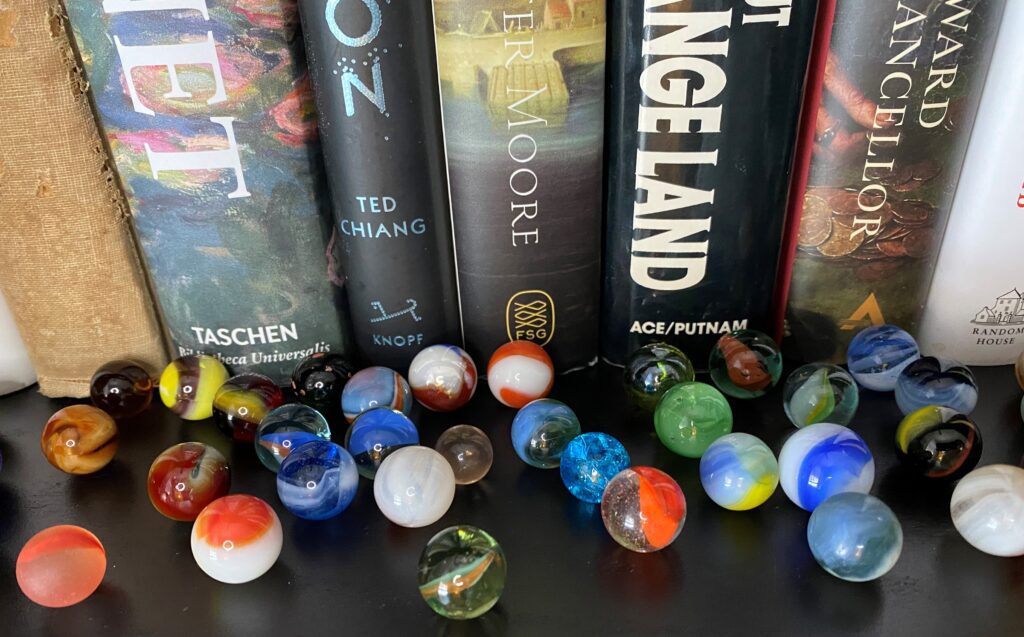
Marble Surface Imperfections
Windows in old houses are often wavy, an artifact of handmade glass. Marbles made by glassblowers will exhibit similar imperfections.
These imperfections may be slight, but they will be present. It’s important to rely on an expert when examining them because the better the manufacture, the smoother the marble.
Handmade marbles will always be smoother than mass-produced marbles, but an expert can notice the difference.
Bubbles in Vintage Marbles
Bubbles result from the blowing process. Mass-produced machine-made marbles won’t have these bubbles, which are easier to spot in clear glass.
Subtle Flaws
Marbles have traditionally been used as toys, so tiny chips or cracks may be present.
Old antique glass marbles may have spent many years being used in marble games or rattling around in netting bags, so expect that they will have imperfections unless they went straight to a display case after being manufactured.
Modern machine-made marbles will display none of the manufacturing imperfections evident in vintage marbles, but they are generally made with much softer glass and chip more easily.
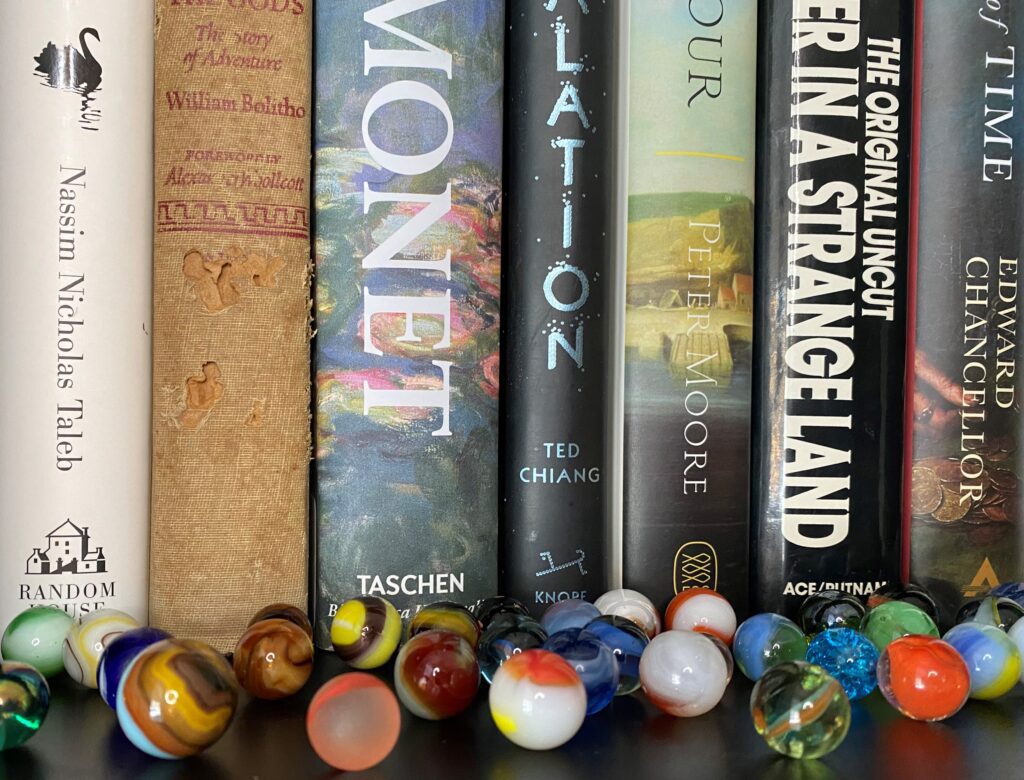
Marble Sizes
There are many sizes of antique marbles with different uses.
Small Marbles
12mm, 9/16-inch, 5/8-inch diameter. 9/16-inch marbles are generally used for Chinese Checkers, and 5/8-inch marbles are used for standard marble games.
Medium Marbles
3/4-inch, 7/8-inch, 1-inch diameter. 3/4-inch is the standard “shooter” size. While 7/8-inch and 1-inch marbles aren’t allowed for normal games as per the rules (at least in the U.S.), you may run across them.
Large Marbles
Over 1-inch diameter. The most common sizes over 1-inch are 1 3/4-inch and 1 5/8-inch, though they usually aren’t allowed in standard games.
Extra Large Marbles
Over 2-inch diameter. Most examples you’ll run across of this size were probably not intended for use in games and are instead meant as decoration.
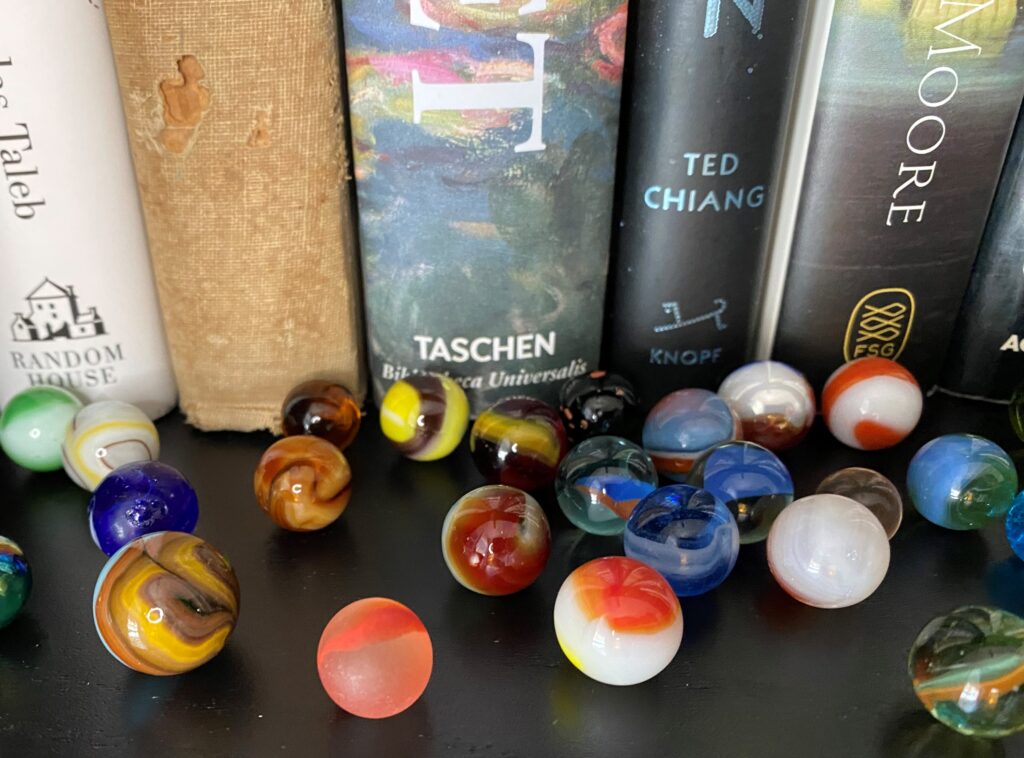
Rare, Vintage, and Old Valuable Marbles
Some important factors other than the condition of the marble is the type of marble. Extra-large marbles are also generally more valuable because they’re usually handmade and of high quality.
The most valuable marbles are generally made from glass.
Sulphide Marbles
Perhaps the most ornate marble style, these marbles were first made in Germany in the mid-1800s and are transparent with figurines in the center.
The figurines are made from clay, though the name came from a mistaken idea that the figurines were made from sulfur.
The German marble figurines come in many shapes, with double sulphide figure marbles containing two figurines.
Solid Core Swirl
These marbles will feature a base-colored marble, which can be colored or clear, with swirls of color running through. “Solid cores” refer to swirls packed together tightly so that there are no clear spaces between them.
If there are no outer swirls, these are called “naked” solid core swirls and are rarer than their counterparts. Rare vintage sizeable large glass marble with solid cores are valuable for collectors.
Divided Ribbon Swirl
As the name implies, these are like solid core swirls, except there are gaps between the inner swirls.
Ribbon
Ribbon patterns run through the center of the marble. They look a bit like a screw shape. There can be single ribbons or multiple ribbons.
If no ribbons decorate the outside, these are called “naked” ribbon core swirl marbles and are much rarer.
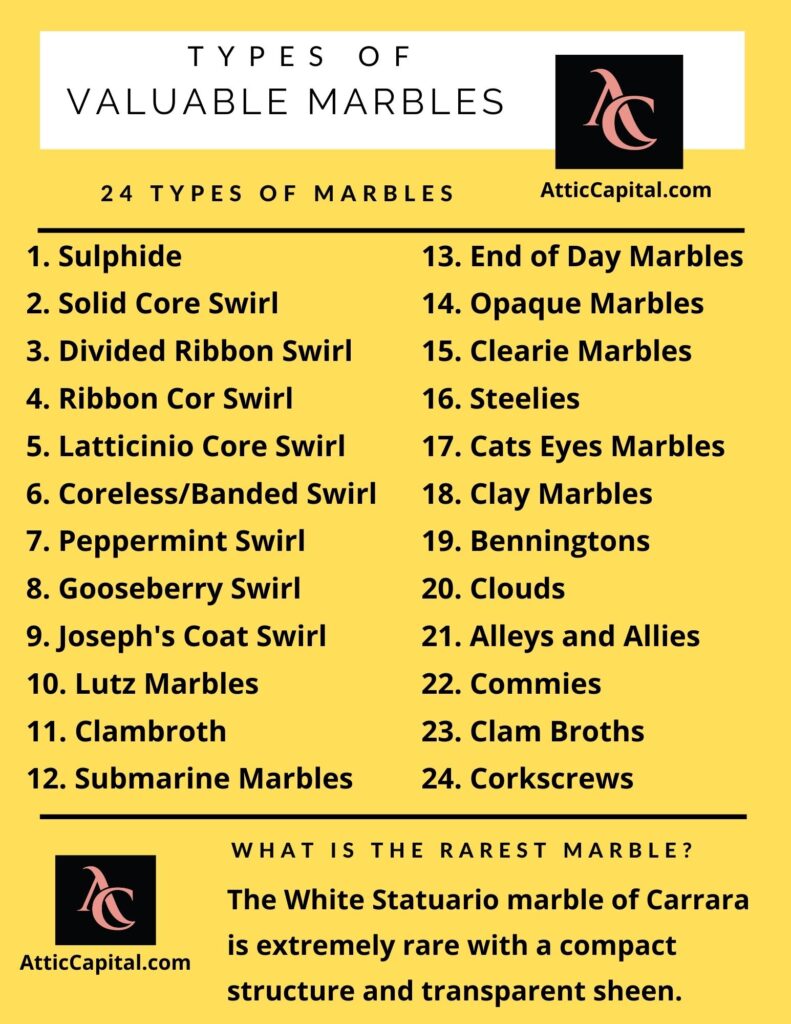
Latticinio Core Swirl
In these vintage marbles, the core features a lattice-type structure. They may twist left or right, though the left is rarer. Cores with red or blue coloring are particularly rare.
Coreless/Banded Swirl
There are no core swirls, only outer swirls. The base can be colored or clear, with blue and green being common.
Peppermint Swirl
As the name implies, these resemble peppermint candies, with white, blue, and pink stripes being the most common colors.
Gooseberry Swirl
Usually, these have yellow/amber base glass. These marbles feature thin parallel bands referred to as “white” but are usually the same yellow or amber as the base glass.
Other base colors exist but are rare.
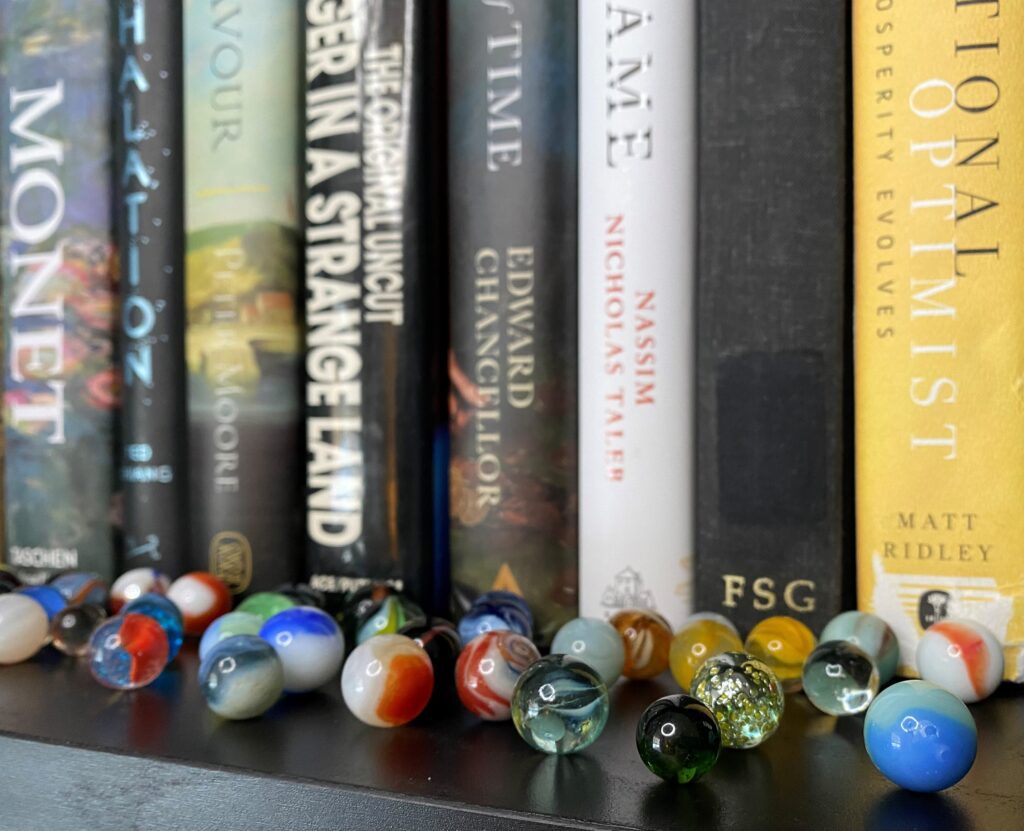
Joseph’s Coat Swirl
The name is meant to evoke the Bible’s reference to the coat of many colors. These marbles are swirled with thin bands of many different colors.
Lutz Marbles
These marbles feature copper flakes mixed into the glass. Generally, the glass will be clear glass, with transparent colored glass lutz marbles commanding a premium.
You may also find some subtypes. Banded Lutz marbles feature a colored glass base with banding. Onionskin lutz marbles have multiple layers of flakes. Ribbon lutz marbles have ribbon core swirls.
Mist lutz marbles have colored cores with the marble’s specks suspended in a transparent base.
Clambroth
These are quite rare. The composition of a clambroth uses both hard and soft glass, and the marbles identification features eight to eighteen swirled bands or strands around the surface, all spaced equally.
Submarine Marbles
Submarines have a transparent base and are made of different styles with flecks of glass and even panels. These factors make Submarine marbles rare and desirable for collectors.
End of Day Marbles
This name refers to the process of glass blowing itself. When a glassblower reached the end of their workday, there would invariably be glass scraps left over.
Sometimes these scraps were melted together and made into unique marbles called “end-of-day” marbles. Subtypes include clouds, mist, and paneled onionskin.
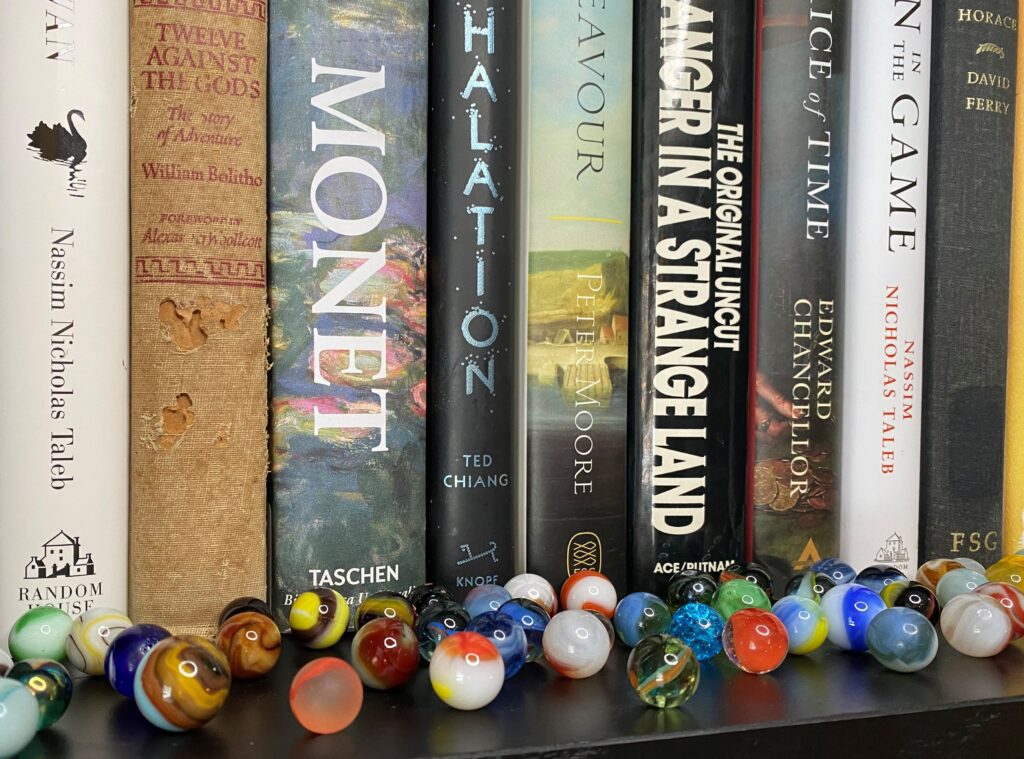
Opaque Marbles
Marbles made from one solid color of glass.
Clearie Marbles
Marbles made from one transparent color of glass.
Steelies
Ball bearing marbles used in marble games.
Egyptian and Roman Old Marbles Worth Money
Ancient Egyptian and Roman marbles are extremely rare and valuable items. Egyptian marbles can be made of several substances, such as bone or glass, while Roman marbles are made of clay.
Aggies
Marbles made of stone. They may be colored or dyed.
Cats Eyes Marbles
First manufactured in Japan, the first cat’s eyes marbles were imported into the U.S. in the early 1950s. Peltier Glass Company, and other American marble manufacturers, produced clear base machine-made marbles that resembled cat’s eye marbles.
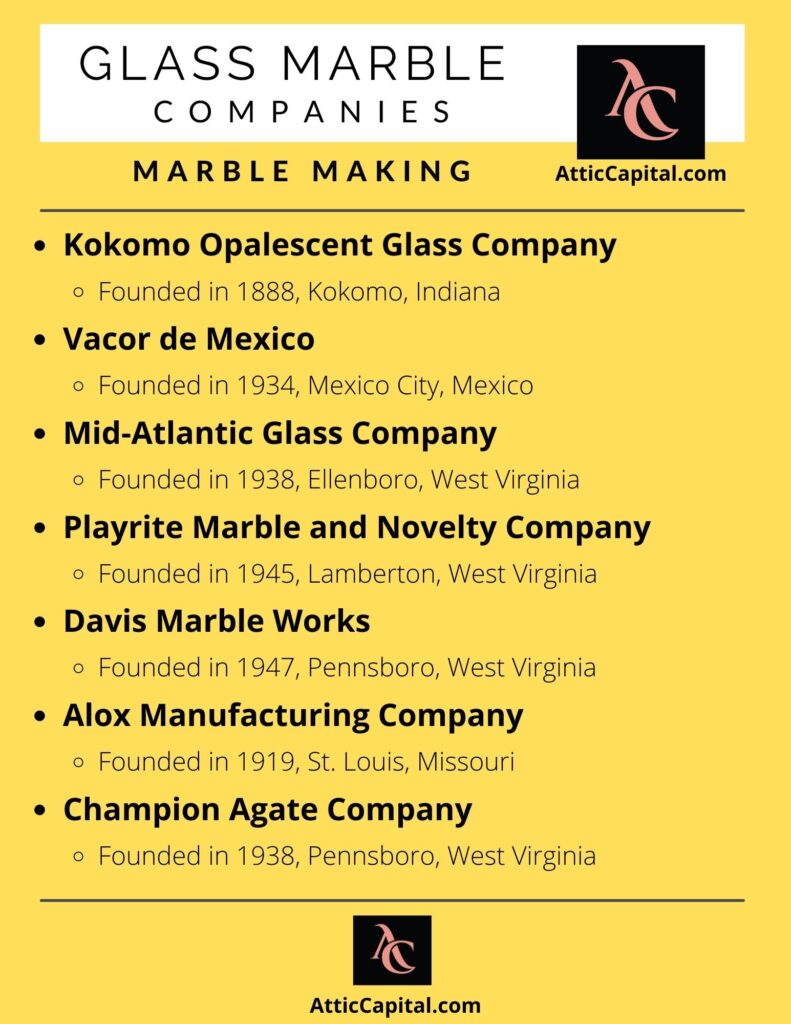
These marbles have clear glass, although some foreign-made cat’s eye marble makers use poor-quality recycled glass with a green tint.
Cat Eye Marbles Worth Money
You can browse valuable Cats Eye marbles on eBay and you’ll notice values ranging from $4 to $400 each.
A few of the most valuable cats’ eyes are rare Japanese marble with certain imperfections that make them unique.
One of the most expensive cat eye marbles listed features a glossy surface with a few bubble pops from the factory. Currently selling for $420.
Corkscrews
Spiraled design marbles with two or more colors rotating around one pole to the other are called corkscrew marbles.
Clay Marbles
There are several types of modern clay marbles. China marbles are painted dense white clay. Bennington marbles are salt-glazed.
Rare Marble Values
Vintage marble prices can vary wildly. A particularly rare pink opaque lutz marble recently sold for over $25,000. Ancient Egyptian and Roman marbles can be worth tens of thousands.
Because of their complex manufacturing process, Sulfides are expensive marbles to procure. Simpler designs in excellent shape can sell for $100 on eBay, while more complex double sulphides can reach into the thousands, depending on appraisal.
Generally, the more ornate, the better, and handmade marbles are the most desired.
Because of their uniqueness and handmade nature, end-of-day collectible marbles can fetch hundreds of dollars. If the marble is exceptionally large or well made, prices into the thousands aren’t unheard of.
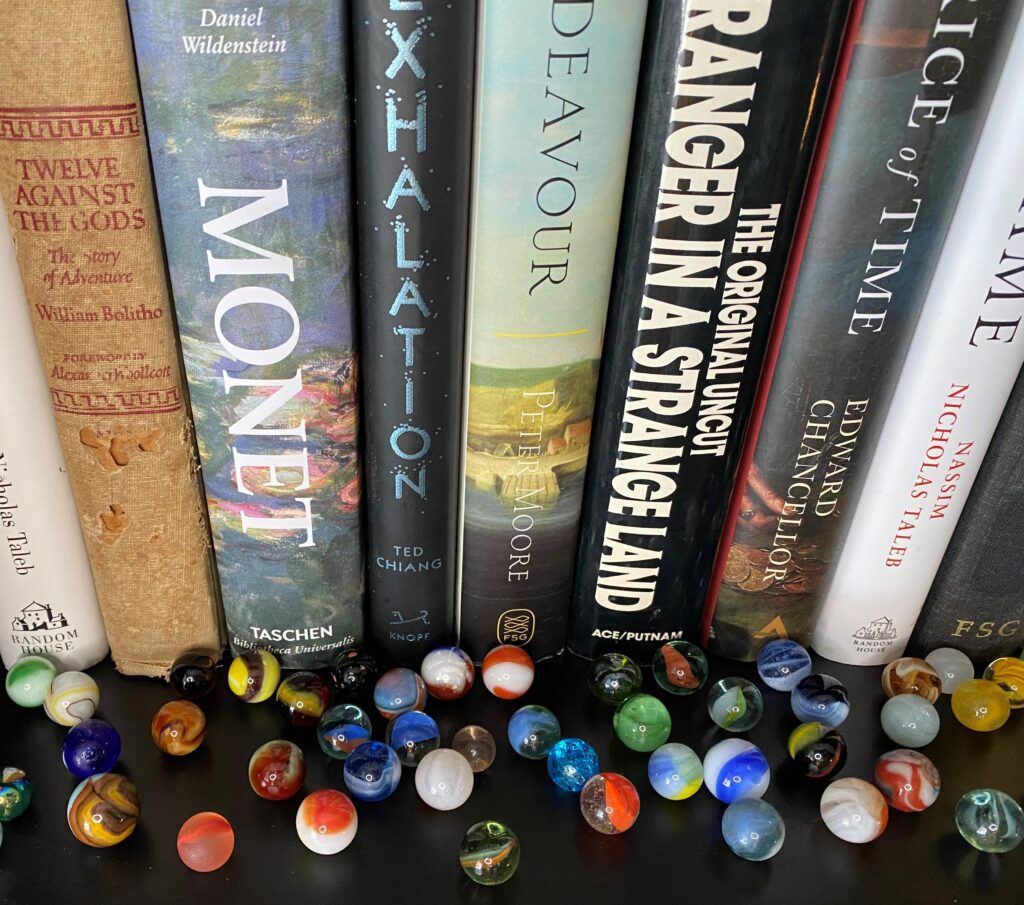
Collectors’ Budget for Old Vintage Marbles Worth Money
Clambroths are typically over $100 for nice examples. Simple lutzes can be had for around $75, with more complex patterns commanding hundreds.
Coreless/banded swirl marbles vary widely, from $30 for more common patterns in good condition to well over $100 for rare Joseph Coats.
Many swirl glass marbles, solid core, ribbon core, or latticinio core, can be worth $20 and up. Particularly beautiful examples could be $50 or more at auction.
Marble sales featured at dealers such as Morphy Auctions can be a great way to get introduced to the world of rare antique marble sales.

As for other mass-produced examples, early Akro Agate marbles might be worth a lot of money, with a high price of $30 to $40. Aggies can be had for $10 or less in mint condition.
Gemstone and precious investment grade stones can go for thousands of dollars.
China clay marbles may bring about $7 or so, with Bennington marbles only being valuable in bulk.
Tell Us What You Think –
What are your favorite rare collectible marbles? Do you own any valuable marbles?

I have five clear glass marbles that look like specks are in them. Are they worth any money?
Those are in spray paint cans. To help shakeup the paint.
Yes, I have several marbles I am looking to sell- lot of about 1800- various kinds. Some older, some I’m not sure about. Is there anyone I can talk to or correspondent with?
Have a lot of marbles. Had for 50 years or more. Going to see what they are worth. Also have large ones. Who would I go see? Thank you
I have about 50 cats eye marbles can someone look at these and tell me what they are worth.
I have a large collection of antique radium or uranium (I’ve heard them called both) marbles that glow but I can’t seem to find any information on them. I also have several opaque and hand blown marbles as well but I’m really interested in finding out any type of info I can on my beautiful glowering ones. Can anyone help?